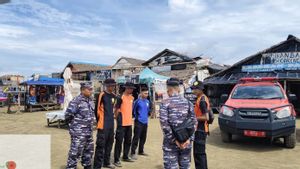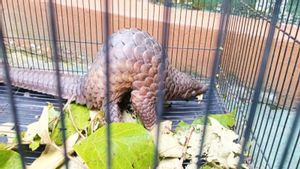JAKARTA – Sunday, April 3, NASA was forced to suspend the last major test of the Space Launch System (SLS) rocket. This was due to a pressure problem that prevented the technician from loading the propellant into the rocket safely. Trials or dress rehearsals had to be postponed until Monday, April 4. NASA announced this news in a post on the Artemis I live blog.
"The team has decided to clean up tanking operations for wet dress rehearsals due to loss of ability to suppress mobile launchers," NASA explained in its post.
Some enthusiasts in mobile launchers, the platforms that provide support for rockets until launch, are unable to maintain positive pressure, which is critical in warding off harmful gases. As a result, NASA engineers were unable to "safely continue" the fuel loading process.
For safety, we've stopped the #Artemis I wet dress rehearsal. Teams are meeting now to assess next steps. We are looking at Monday, April 4 as the next opportunity to resume operations, and will have a media briefing later today. Check here for updates. https://t.co/pweviGRjwg
— NASA (@NASA) April 3, 2022
This type of rehearsal is labeled "wet" because it's basically a run-through of all the procedures NASA has to perform during an actual SLS launch, including filling a 322-foot-tall rocket with 700.000 gallons of propellant.
In a press conference on Sunday evening, NASA said its team was currently on the launch pad trying to solve the problem. NASA said it would continue the wet dress rehearsal the next day.
We're targeting Monday, April 4, to resume the @NASAArtemis I wet dress rehearsal. The launch control team will meet at 6am ET (10:00 UTC) before deciding if they will proceed with propellant loading.
Follow @NASAGroundSys and https://t.co/dMVnvEQcfC for updates. pic.twitter.com/CUWvGYG3kZ
— NASA (@NASA) April 3, 2022
Tests initially began on April 1 at the Kennedy Space Center in Florida and were supposed to finish on Sunday. But NASA experienced bad weather Saturday night, when lightning struck the towers around the SLS launch pad.
SEE ALSO:
Jeremy Parsons, deputy program manager at NASA's Ground Exploration Systems, said one of these attacks was one of the strongest NASA has seen since installing the lightning protection system.
"It hit the catenary cable running between the 3 towers," Parsons wrote in a tweet from the EGS Twitter account. “System is working great & keeping SLS and Orion safe.”
The SLS was supposed to take the Orion spacecraft on an unmanned mission around the Moon as part of the Artemis program, or flight called Artemis I. That mission, which was tentatively scheduled for this summer, should get the rocket and NASA ready to go on with the mission that was eventually made. will bring humans to the surface of the moon.
The English, Chinese, Japanese, Arabic, and French versions are automatically generated by the AI. So there may still be inaccuracies in translating, please always see Indonesian as our main language. (system supported by DigitalSiber.id)












